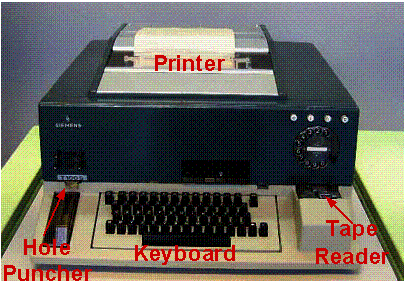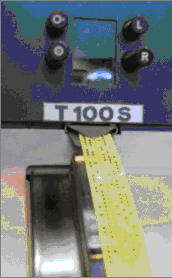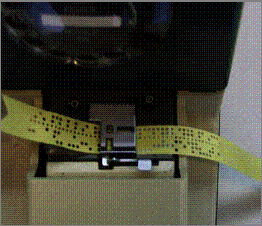Teletype Siemens T100S
Telegraph > Teletype Siemens T100S
Teletypes are very robust electro-mechanical machines, which were used for Transmitting / Receiving text information (Messages) from point to point or within a Telex Exchange network, by a pair of wires. Most Teletypes used the 5-bit Baudot code. This limited the Character set to 32 codes.
Usually Teletypes consist of a Keyboard, a Transmitter, a Receiver and a Printer. However, some are also equipped with a Hole Puncher and a Tape Reader.
Here is an example of Teletype - Teletype SIEMENS T100S, Figure 1. There are two Operation Modes for the Teletype SIEMENS T100S: LOCAL MODE and TELETYPE MODE.

Figure 1: Teletype SIEMENS T100S
In LOCAL MODE, the Teletype works quite the same as a Normal Typewriter. But aside from typing simply on a piece of paper, you can also produce at the same time a Punched Paper Tape with a Message, Figure 2. The Teletype can also act as a Tape Reader. By inserting a piece of Punched Paper Tape into the Teletype, it Reads the Tape and Prints Out the Message in alphanumeric, Figure 3.

Figure 2: A Punched Paper Tape with Message produced by Hole Puncher

Figure 3: Tape Reader reads the Tape and Prints Out the Message in alphanumeric
In TELETYPE MODE, it does almost the same as in the Local Mode but with a slight difference. It can Print and Send the Typed Message or Send a Message that has been previously Punched in a Paper Tape to another Teletype in Real Time.
Due to the convenient control and simple telegraphic procedures, Teletypes were used extensively in the past. They were widely used in Macau between the 60’s and 80’s. Later on they were replaced by Facsimile machine.
Telegraph > Teletype Siemens T100S
